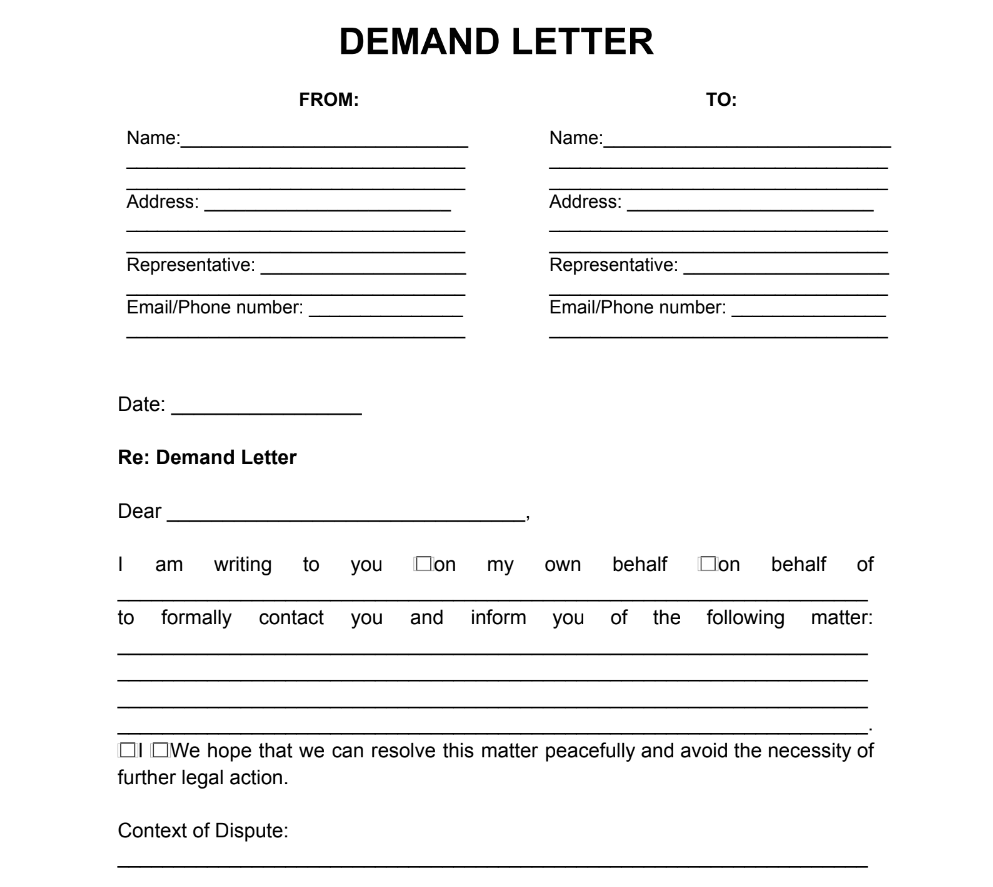 Preview
Preview
A personal property demand letter is a formal document used to request the return of personal property that is in the possession of another party. The sender can assert their property rights through the letter, providing a chance to settle the matter without legal action, saving time, costs, and preserving relationships.
A personal property demand letter is a formal document used to request the return of personal property that is in the possession of another party. The sender can assert their property rights through the letter, providing a chance to settle the matter without legal action, saving time, costs, and preserving relationships.

A demand letter for resolving disputes is a document often used in legal matters to communicate a complaint or a claim from one party to another. It serves as a significant way to formally notify the other party of your intentions, particularly when initiating negotiations for a resolution. A demand letter example is also important when requesting a compromise, such as a payment or action, as it establishes the seriousness of your demand and your expectation for resolving the issue.
A sample demand letter is widely used across various scenarios, such as:
The function of a demand letter sample is not limited to these examples and can extend to any situation where one party believes they are due compensation or resolution for a perceived wrong.
A demand letter, normally associated with civil disputes, provides details about a perceived transgression and the parties involved. The prominent elements of the free demand letter template include:
The contexts for initiating a demand letter vary, but they lay out a roadmap leading toward potential litigation. Therefore, a demand for payment letter template serves as a blueprint for a potential legal process, fostering the resolution of the dispute.
While the specific content of a payment demand letter will rely upon the context of each unique situation, here are some general steps to follow when drafting one:
Bear in mind that although a demand notice for payment can be written by anyone, consulting an attorney usually increases the letter’s seriousness and legitimacy. They can guide on state-specific laws and ensure the letter does not confirm any biases or discrimination.
Moreover, while drafting a demand of payment letter is an important first step toward formal legal action if necessary, it does not ensure that the disagreement will be addressed.
 Preview
Preview
